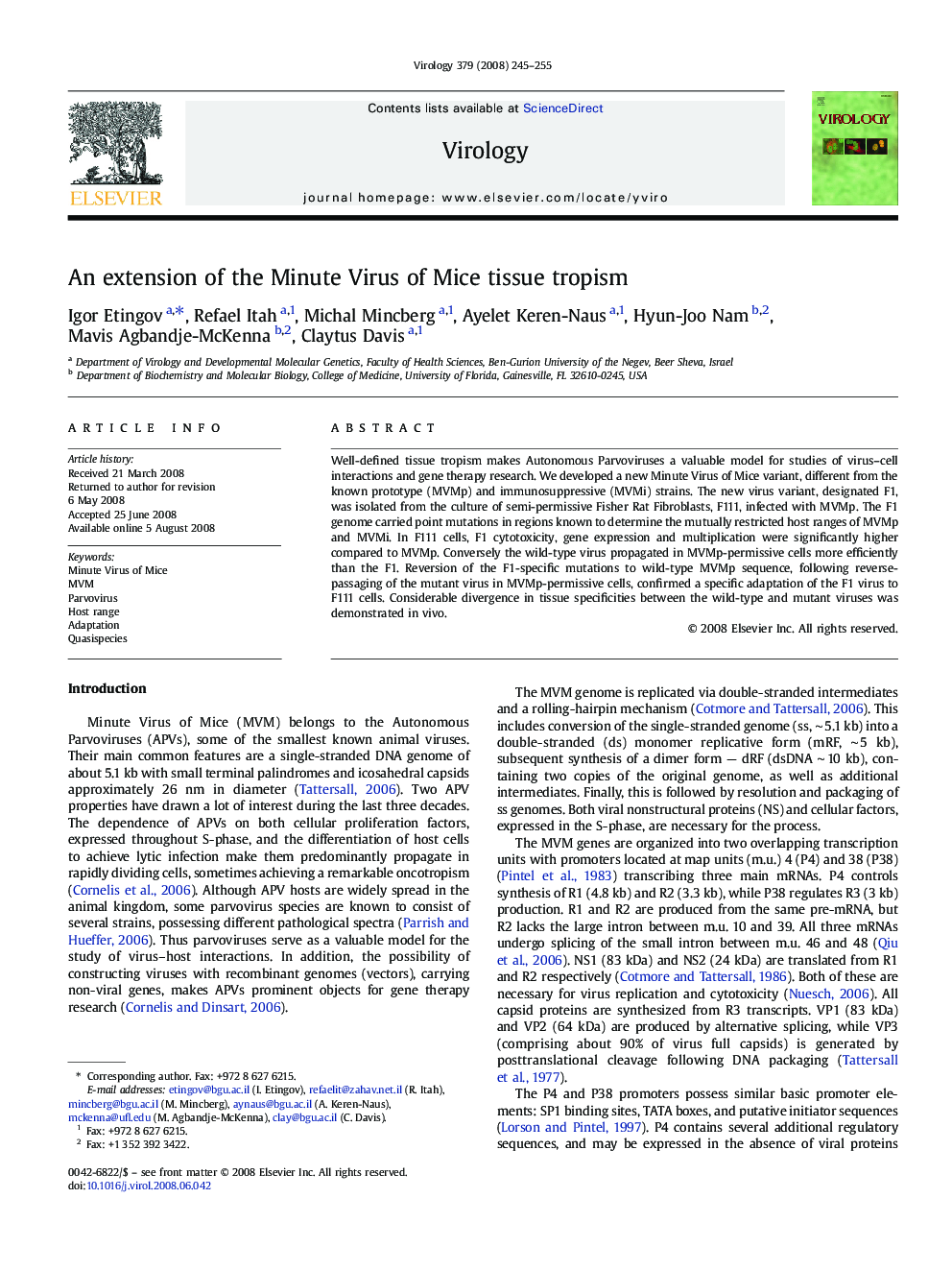| Article ID | Journal | Published Year | Pages | File Type |
|---|---|---|---|---|
| 3426212 | Virology | 2008 | 11 Pages |
Well-defined tissue tropism makes Autonomous Parvoviruses a valuable model for studies of virus–cell interactions and gene therapy research. We developed a new Minute Virus of Mice variant, different from the known prototype (MVMp) and immunosuppressive (MVMi) strains. The new virus variant, designated F1, was isolated from the culture of semi-permissive Fisher Rat Fibroblasts, F111, infected with MVMp. The F1 genome carried point mutations in regions known to determine the mutually restricted host ranges of MVMp and MVMi. In F111 cells, F1 cytotoxicity, gene expression and multiplication were significantly higher compared to MVMp. Conversely the wild-type virus propagated in MVMp-permissive cells more efficiently than the F1. Reversion of the F1-specific mutations to wild-type MVMp sequence, following reverse-passaging of the mutant virus in MVMp-permissive cells, confirmed a specific adaptation of the F1 virus to F111 cells. Considerable divergence in tissue specificities between the wild-type and mutant viruses was demonstrated in vivo.
